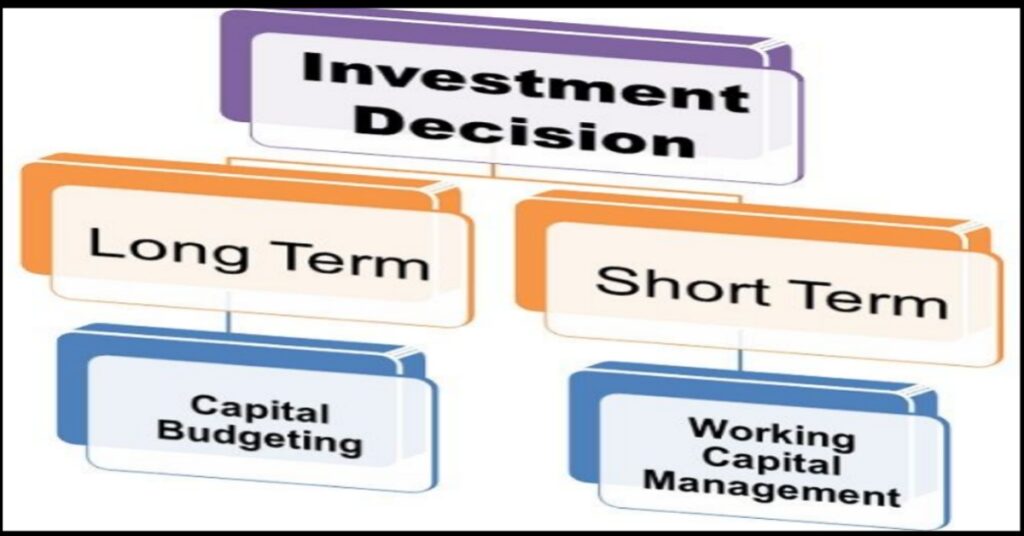Discussion On Investment Decisions
Analyzing different asset types based on their risk-return ratio is a fundamental step in making informed investment decisions. Assets like stocks, bonds, real estate, and commodities each come with their own level of risk and potential return.
Introduction
This article discusses the three essential investment process steps that ensure more and stable returns in the long run.
Why is the Investment Process Important?
Investment management involves creating and implementing strategies to help individuals achieve their financial objectives, whether it’s building a retirement fund, generating wealth, or saving for specific goals like purchasing a home. It’s about making informed decisions and managing risks to optimize returns over time..
Discussion On Investment Decisions
What is the Investment Decision-Making Process?
Crafting an investment strategy involves assessing various asset classes like stocks, bonds, real estate, and commodities to determine the right mix that aligns with your risk tolerance, goals, and timeline. Diversification across these assets helps manage risk while aiming for optimal returns. Asset allocation and portfolio management play crucial roles in achieving a balanced and effective investment plan.
Asset allocation
Asset allocation is a pivotal phase. It involves deciding the proportion of your investment portfolio to allocate to different asset classes based on your risk tolerance, time horizon, and financial objectives. Balancing higher-risk, higher-return assets like stocks (equity) with lower-risk options such as bonds or money market instruments helps manage risk while pursuing your financial goals. The choice of assets reflects your risk appetite and the desired level of diversification in your portfolio.
Discussion On Investment Decisions
.
Related more article – Fun Finance Project Ideas & Topics [For Freshers & Experienced]
.
For an effective investment process, you must asses
Your investment goals
How much do you need to invest to reach the goals?
The degree of risk tolerance
Diversification of portfolio
Choosing the right assets
Investment returns
Tax* provisions
Discussion On Investment Decisions
The 3 Important Investment Management Process Steps
1 Evaluation of investment goals
Evaluating investment goals is fundamental. Your investment objectives can indeed range from wealth creation for the long term to generating regular income or aiming for capital preservation. These goals can evolve based on your age, income level, and overall financial situation. Younger individuals might lean toward growth-focused investments for wealth creation, while older investors might prioritize income or safety by opting for more stable assets to preserve capital. Understanding these objectives is key to tailoring a suitable investment strategy.
Usually, young people invest with the aim of accumulating wealth and have a risky appetite. But income generation and retirement planning are the purposes of investment when you reach midlife and later midlife.
2 Evaluation of the present financial situation
Disciplined savings are the bedrock of any effective investment strategy. Understanding your current financial situation, including monthly expenses, assets, liabilities, and assessing your risk tolerance, is crucial before allocating funds towards specific investments. This assessment helps in determining the amount you can save and invest, aligning with the time horizon of your financial goals. It’s essentially the foundation for creating a realistic and effective investment plan.
Discussion On Investment Decisions
3 Choose the right investment strategy
Having a well-thought-out investment strategy is vital for achieving stable and satisfactory returns. This strategy encompasses various aspects like asset allocation, diversification, risk management, and investment selection aligned with your goals and risk tolerance. It’s about creating a roadmap that aims for growth while considering potential risks, thus increasing the likelihood of achieving stable and favorable returns over time
Discussion On Investment Decisions
The strategies of investment are as follows:
Passive: Passive investment strategy doesn’t need day-to-day involvement. It allows the investor to sit back while their investments generates returns .
Discussion On Investment Decisions
Conclusion
An investment process thus helps you build and manage your portfolio that is in line with your goals and risk tolerance.
So, buy suitable life insurance online today and ensure your family’s financial protection and fulfilment of their dreams in your absence.
Read more >>
Computational Thinking And Science
20 Finance Project Topic And Ideas
